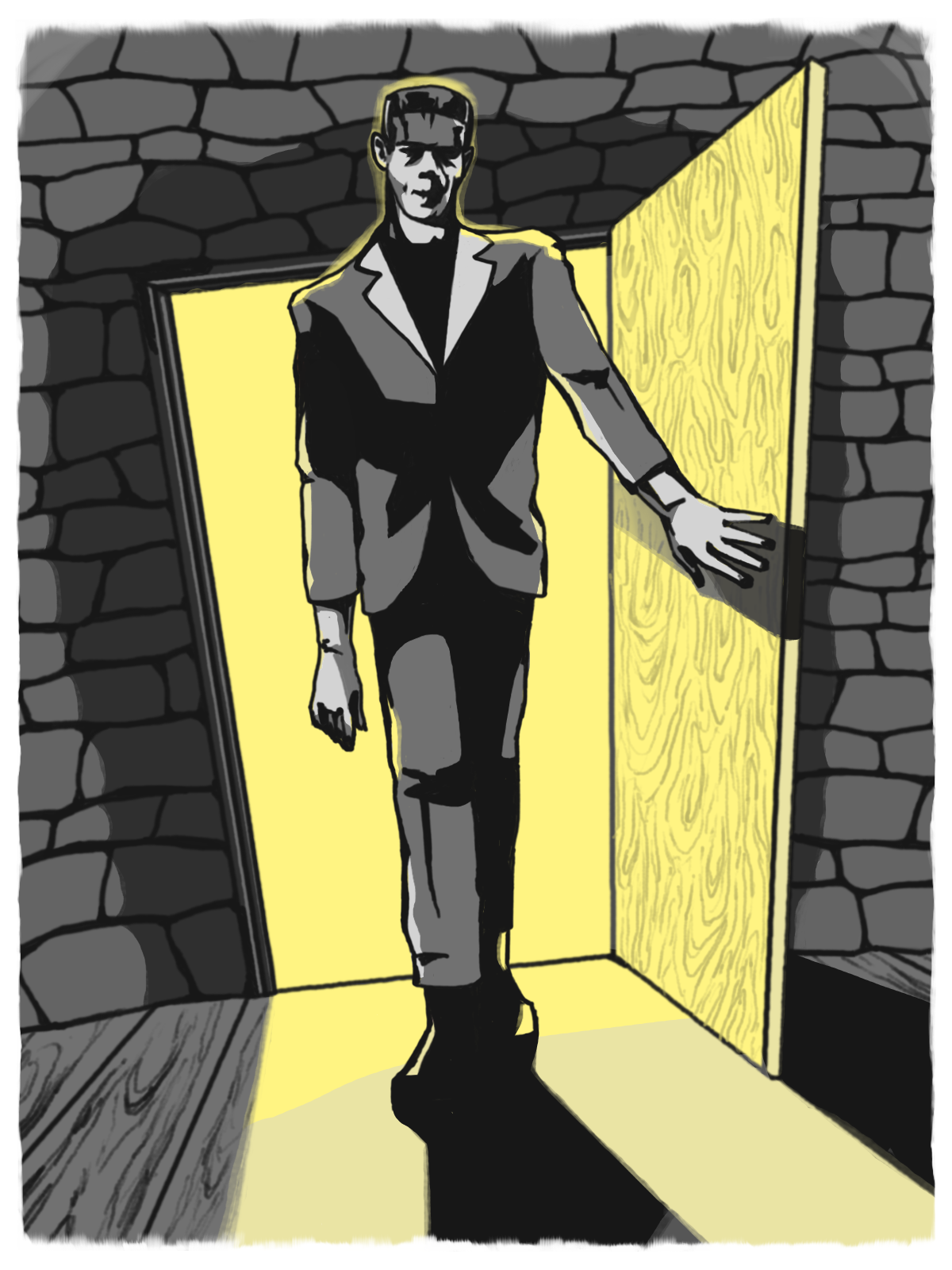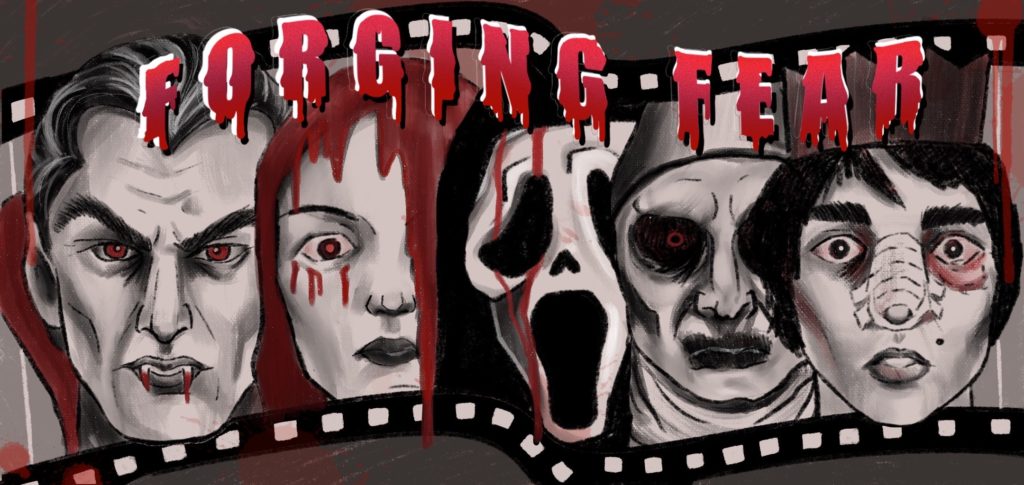Forging Fear: UCLA faculty walk through haunted history of horror genre

(Megan Wu/Daily Bruin)
By Marissa Li
Nov. 11, 2022 7:12 p.m.
This post was updated Nov. 27 at 8:09 p.m.
In the century since its conception, the horror genre in film has undergone major ebbs and flows in its storylines and themes. Horror movies have always shaped each other throughout history: some tropes persist from the very first movies, while revolutionary ideas are developed with each new production. In “Forging Fear,” columnist Marissa Li profiles the evolution of horror in the film industry and the social commentaries they provide.

From monsters to masked killers, filmmakers have been horrifying audiences for more than a century.
The horror genre has persisted in the film industry from as early as the mid-1800s, with the first horror film released in 1896. According to retired film lecturer Jonathan Kuntz, the first horror film is widely known to be the 3-minute-long silent French film “The House of the Devil.” While it deviates from the flicks audiences are familiar with today, “The House of the Devil” is still widely considered to be a horror movie because of its ubiquitous characters and storyline, both of which are still seen in contemporary feature films.
“It’s got ghosts, it’s got skeletons, it’s got vampire bats, it’s got devils, it’s got little creatures running around,” Kuntz said. “It’s got a whole lot of elements that we would later see developing into … the horror genre.”
[Related: Cinematic Culture: Horror provides audiences with cathartic chills and thrills]
However, visiting film professor Jan-Christopher Horak said the horror genre was established far before the first motion picture was released. “Frankenstein” was one of the most notable horror novels written by Mary Shelley in 1816 and was adapted to film in 1931, Kuntz said. The movie adaptation follows a mad scientist, Victor Frankenstein, who reanimates a dead body and creates a monster. Eventually, Dr. Frankenstein loses control of his creation when it goes on a murder spree starting with one of Frankenstein’s colleagues. Throughout the movie, the monster continues to kill more civilians until the film ends with it dying in a burning mill.
“Frankenstein,” along with many other movies at the time, had a simple exposition that included a centerpiece monster as the murderer, said film lecturer Bryan Wuest, who teaches the course Film and Television 114: “Film Genres: Horror Film.” Wuest said that over the years leading up to the present, horror has undergone many shifts in its storytelling style, bouncing back and forth between the single monster, linear storyline and the psychologically ambiguous end of the storytelling spectrum. However, as horror was still earning its place in the film industry, it tended to gravitate toward dramatic scenes and characters, Wuest said.
“Now, we understand that sometimes, some of the best horror actually doesn’t show you everything,” Wuest said. “It leaves things in the shadows. … That was not what they were doing in the ’30s. They were proud of their makeup and their sets, and they wanted you to see it.”
Most of the movies coming out of Hollywood at the time were similar in that they focused on a singular dramatized monster, Wuest said. “Frankenstein” was one of the many movies in the Hollywood horror boom, Kuntz said. He added that in the early 1930s, Universal Studios produced horror movies such as “The Mummy,” “Dracula” and “The Wolf Man.” All of these films would go on to establish archetypes such as mummies, vampires and werewolves that continue to be seen in today’s films, Kuntz said.
While these movies may seem straightforward with the sole purpose of showing creative kills and gore, many writers and directors of this time seized the opportunity to reflect upon the historical events they were living through, Horak said. For example, “The Wolf Man” was written by Curt Siodmak, a Jewish German American refugee who used the Wolf Man to portray the violence of Nazi Germany, Horak said.
“He reads this character of the Wolf Man and specifically states that the Wolf Man is the violent, brutal side of humanity, and he identifies that with the Nazis,” Horak said.
War was also critical in influencing many horror movies that feature radiation-spawned monsters, such as “Godzilla” and “Them!,” Kuntz said. World War II, the Cold War and the Hiroshima and Nagasaki atomic bombings had a profound effect on Japanese society and would ultimately permeate films produced at the time, Wuest said.
Controversy surrounding social commentary was limited in this genre with a few exceptions, Horak said. For instance, “Dracula” had an issue with the overt sexuality between Dracula and Lucy, and zombie films in the 1940s had a similar problem, Horak said. These kinds of issues were regulated by the Motion Picture Producers and Distributors of America, Inc. at the time, which was the standard internal censorship program used in the film industry, he added. However, Horak said that because of the smaller niche horror occupied, backlash was still relatively minimal.
“Horror films are basically B-films, (or) programs, so they’re not the big films. So controversy was limited quite a bit,” Horak said.
[Related: UCLA Film & Television Archive to hold in-person screening of restored horror films]
Controversy was limited in the genre during this time period and so were its accolades, Wuest said. In the early to mid-1900s, specifically the 1930s, horror was still establishing itself and was not garnering the Oscar-level attention of other genres. In fact, Wuest said the genre was not taken seriously until the ’70s when “The Exorcist” was nominated for Best Picture as the first horror movie to achieve this recognition. While horror had been gaining more attention leading up to that point, Wuest said, the nomination of “The Exorcist” showed how critics had begun to respect the genre.
“There were … films in the ’60s and ’70s that were understood as, ‘This isn’t junk film (that) you should be embarrassed to watch. These are legit films made by good filmmakers,’” Wuest said. “They had more cultural prestige than the horror of the previous decades.”


